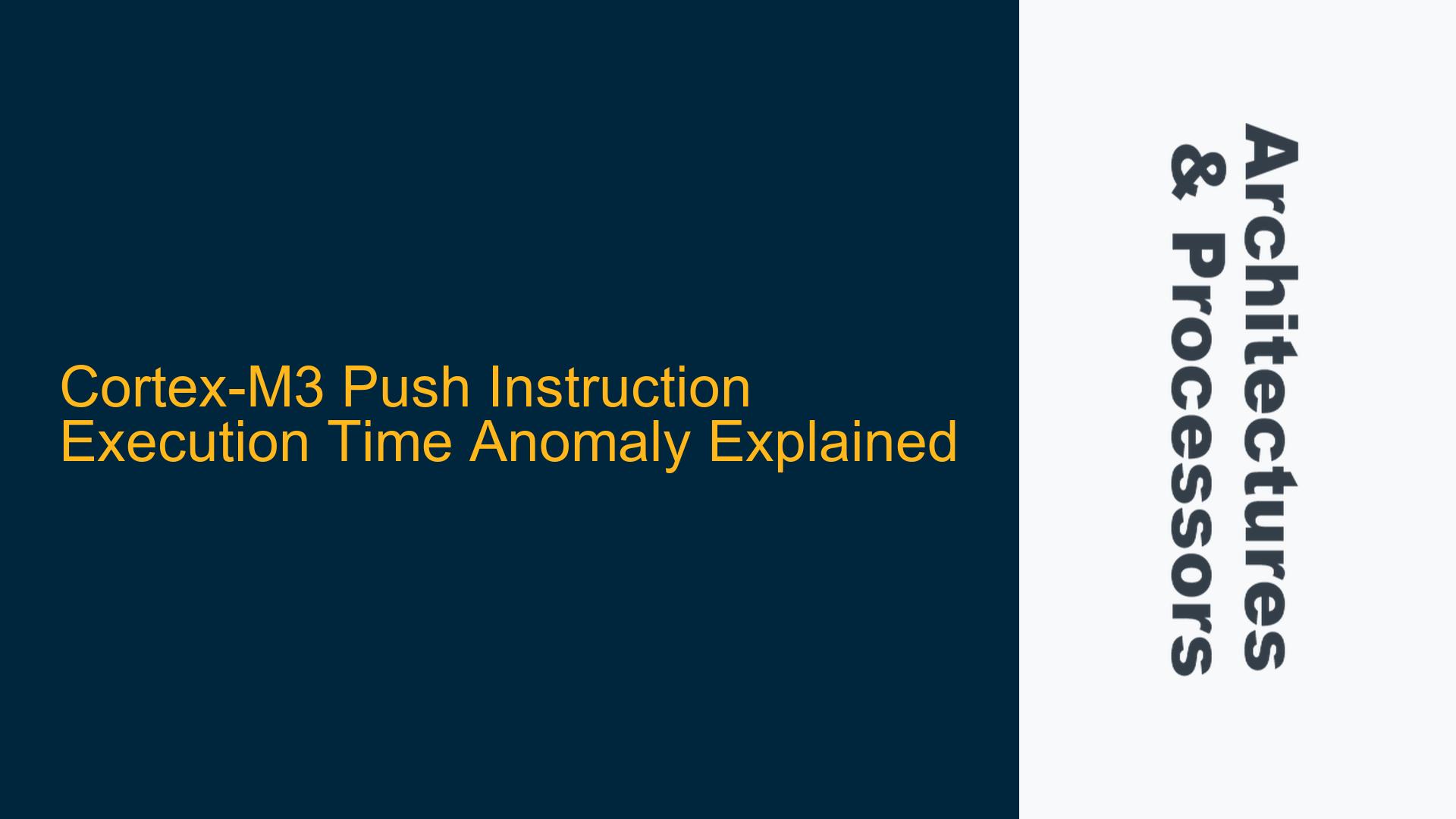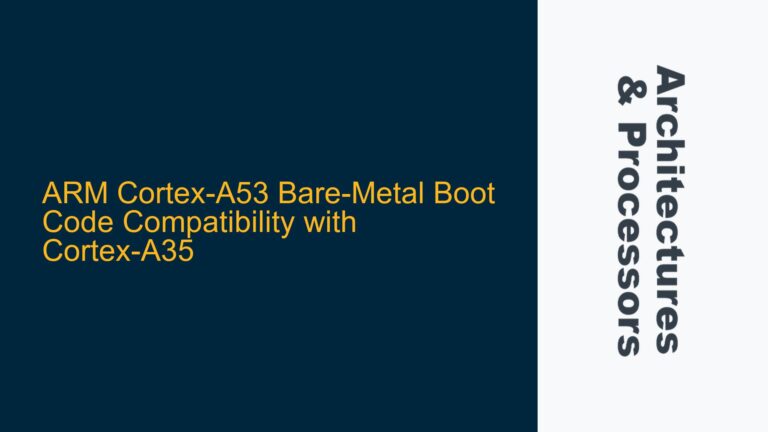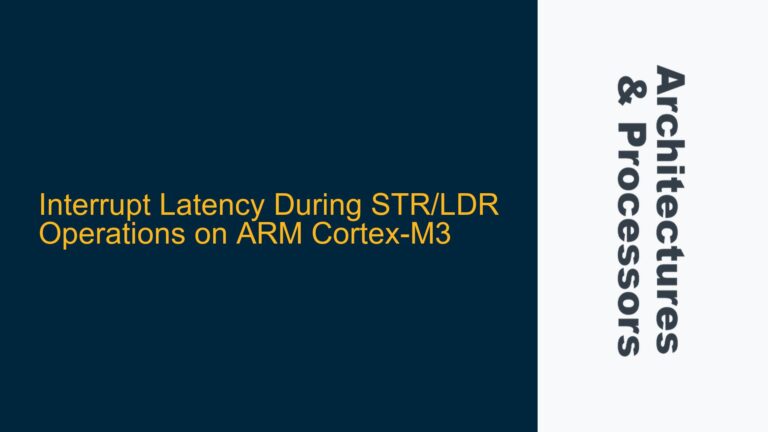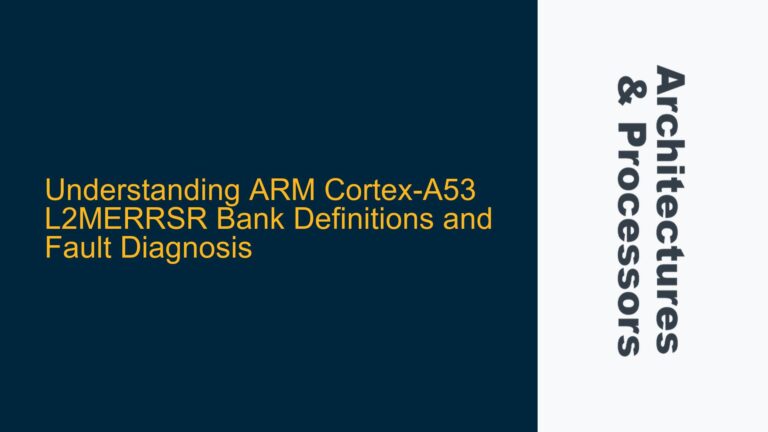Cortex-M3 Push Instruction Execution Time Behavior
The Cortex-M3 processor, a widely used ARM architecture microcontroller, exhibits an interesting behavior in the execution time of the PUSH instruction when storing multiple registers to the stack. Specifically, the execution time for the first register in the PUSH operation is significantly longer than for subsequent registers. For example, pushing a single register (PUSH {r1}) takes approximately 0.028 microseconds, while pushing two registers (PUSH {r1, r2}) takes 0.042 microseconds. This pattern continues linearly, with each additional register adding 0.014 microseconds to the total execution time. This behavior raises questions about the underlying mechanisms of the PUSH instruction and why the first register incurs a higher time cost.
To understand this phenomenon, we must delve into the Cortex-M3 architecture, its stack operations, and the microarchitectural details of the PUSH instruction. The Cortex-M3 is based on the ARMv7-M architecture, which implements a 3-stage pipeline (fetch, decode, execute) and includes a Thumb-2 instruction set. The PUSH instruction is part of the Thumb-2 instruction set and is used to store multiple registers onto the stack in a single operation. The stack is a Last-In-First-Out (LIFO) data structure, and the PUSH operation decrements the stack pointer (SP) before storing each register value.
The execution time discrepancy arises due to the way the Cortex-M3 handles the PUSH instruction internally. The first register in the PUSH operation requires additional cycles to perform stack pointer adjustment and memory address calculation, while subsequent registers benefit from pipelining and optimized memory access patterns. This behavior is consistent with the ARM Technical Reference Manual (TRM) for the Cortex-M3, which provides detailed cycle counts for various instructions.
Stack Pointer Adjustment and Memory Access Overhead
The primary cause of the increased execution time for the first register in a PUSH operation is the overhead associated with stack pointer adjustment and memory access initialization. When the PUSH instruction is executed, the Cortex-M3 must first decrement the stack pointer to allocate space for the registers being stored. This adjustment involves calculating the new stack pointer value and updating the SP register. The first register in the PUSH operation incurs the full cost of this adjustment, as the processor must ensure the stack pointer is correctly aligned and ready for memory writes.
Additionally, the first register access involves initializing the memory subsystem for the write operation. This includes setting up the memory address, performing any necessary address translation, and preparing the data bus for the transfer. These steps add to the execution time for the first register. Subsequent registers benefit from the already-initialized memory subsystem and pipelined execution, resulting in reduced overhead and faster execution times.
The Cortex-M3’s pipeline structure also plays a role in this behavior. The processor’s 3-stage pipeline allows for overlapping instruction execution, but the first register in a PUSH operation must wait for the stack pointer adjustment and memory initialization to complete before proceeding. This creates a bottleneck that is not present for subsequent registers, which can be processed in parallel with the ongoing memory writes.
Optimizing Push Instruction Performance
To address the execution time discrepancy and optimize PUSH instruction performance, developers can take several steps. First, understanding the cycle counts provided in the ARM Cortex-M3 Technical Reference Manual is crucial. The TRM specifies that the PUSH instruction takes 1 cycle for the first register and 1 additional cycle for each subsequent register. This aligns with the observed execution times of 0.028 microseconds for the first register and 0.014 microseconds for each additional register.
Developers can minimize the impact of the initial overhead by grouping PUSH operations where possible. For example, instead of performing multiple single-register PUSH operations, combining them into a single multi-register PUSH can reduce the overall execution time. This approach leverages the pipelined execution and optimized memory access patterns for subsequent registers.
Another optimization technique involves aligning stack usage with the processor’s memory architecture. Ensuring that the stack pointer is aligned to 32-bit boundaries can improve memory access efficiency and reduce the overhead associated with stack pointer adjustment. Additionally, using the PUSH instruction in conjunction with other stack-manipulation instructions, such as POP, can help maintain a balanced stack and avoid unnecessary pointer adjustments.
In cases where performance is critical, developers may consider using alternative approaches to register storage, such as direct memory access or custom stack management routines. However, these methods require careful implementation to avoid introducing new bottlenecks or violating the Cortex-M3’s architectural constraints.
By understanding the underlying causes of the PUSH instruction’s execution time behavior and applying these optimization techniques, developers can achieve more efficient and predictable performance in their Cortex-M3-based applications. The key is to balance the trade-offs between instruction complexity, memory access patterns, and pipeline utilization to maximize the processor’s capabilities.






